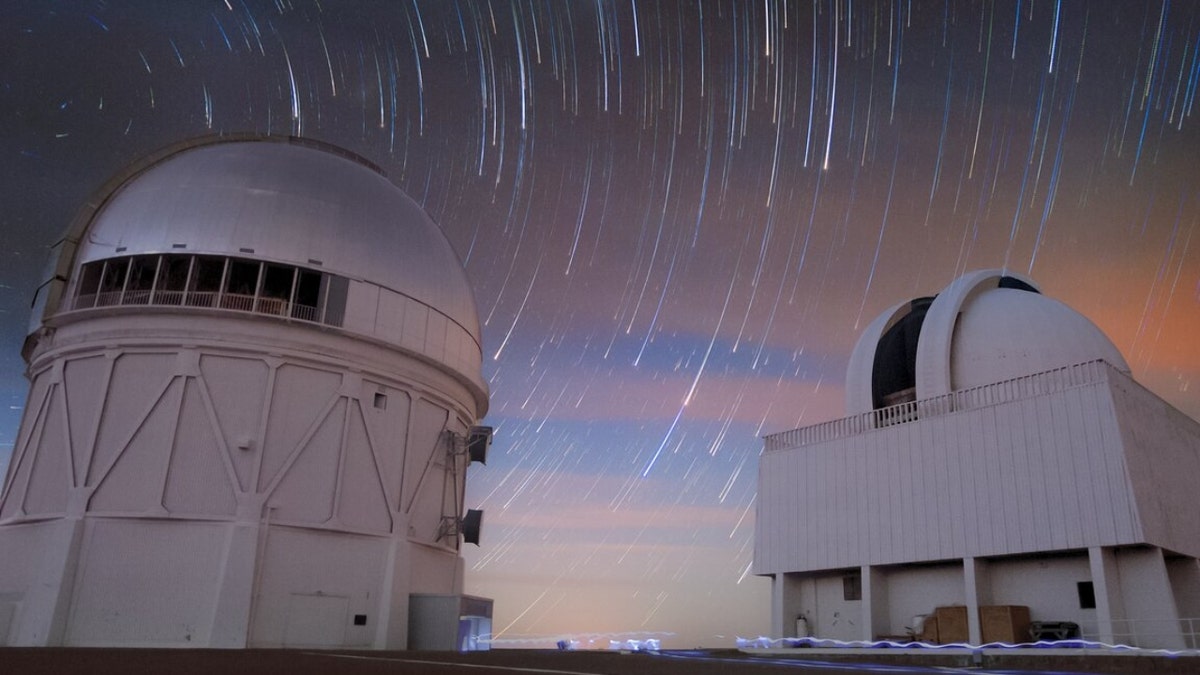Webb Space Telescope allows us to 'look into the past': Theoretical physicist
Theoretical physicist Dr. Michio Kaku explains the significance of new images provided by NASA's Webb Space Telescope on 'Sunday Night in America.'
Astronomers at the National Science Foundation’s NOIRLab made the first confirmed detection of a star system that will one day form a kilonova, an ultra-powerful and gold-producing explosion created by merging neutron stars.
Researchers said on Tuesday that they used data from the SMARTS 1.5-meter Telescope at Cerro Tololo Inter-American Observatory in Chile to uncover the first example of the phenomenally rare type of binary star system. The findings are published in the journal Nature.
The arrangement, known as CPD-29 2176, is so astonishingly rare that only about 10 such systems are believed to exist in the Milky Way galaxy.
CPD-29 2176, is located about 11,400 light-years from Earth and was first identified by NASA’s Neil Gehrels Swift Observatory.
VIDEO SHOWS 'MYSTERIOUS' WHIRLPOOL SPIRAL FLYING OVER HAWAII SKY

The SMARTS 1.5m telescope in Chile (Rodrigo Hinojosa )
Upon further observation with the telescope, the scientists were able to deduce the orbital characteristics and types of stars that make up this system: a neutron star that was created by an ultra-stripped supernova and a closely orbiting massive star that is in the process of becoming an ultra-stripped supernova itself.
An ultra-stripped supernova is the end-of-life explosion of a massive star that has had much of its outer atmosphere stripped away by a companion star.

An artist’s impression of the first confirmed detection of a star system that will one day form a kilonova – the ultra-powerful, gold-producing explosion created by merging neutron stars. (NOIRLab)
MORE THAN 3 BILLION STAR, GALAXIES ARE CAPTURED IN A MASSIVE NEW SURVEY
"The current neutron star would have to form without ejecting its companion from the system. An ultra-stripped supernova is the best explanation for why these companion stars are in such a tight orbit," the paper's lead author, Noel Richardson of Embry-Riddle Aeronautical University, said in a statement. "To one day create a kilonova, the other star would also need to explode as an ultra-stripped supernova so the two neutron stars could eventually collide and merge."

This long-exposure photograph shows the motion of stars during the night above the Blanco 4-meter telescope (left) and the SMARTS 1.5-meter telescope (right) at Cerro Tololo Inter-American Observatory in Chile, a program of the NSF’s National Optical-Infrared Astronomy Research Laboratory. (Credit: CTIO//NOIRLab/NSF/AURA/D. Munizaga)
CLICK HERE TO GET THE FOX NEWS APP
It will take at least a million years for the massive star to end its life as a titanic supernova explosion and leave behind a second neutron star. The authors said the stellar remnant and the pre-existing neutron star will need to draw together before merging and noted that the resulting kilonova explosion will produce much more powerful gravitational waves and leave behind a large amount of heavy elements, including silver and gold.


